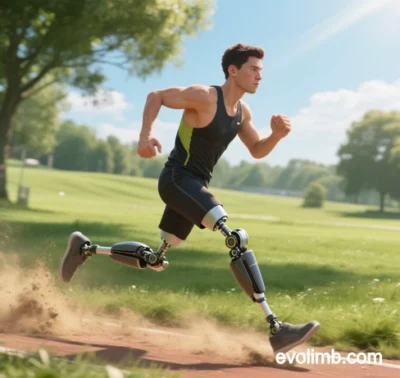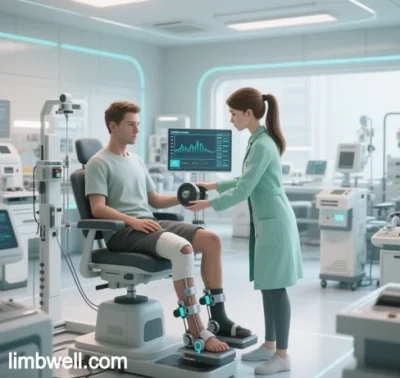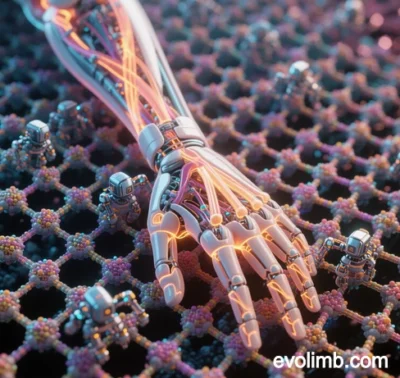
HaptiSense: Definition and Core Functions of Haptic Perception Technology
1. Technical Definition
HaptiSense is a multimodal haptic sensing and feedback technology that integrates high-precision sensors, intelligent algorithms, and haptic actuators to enable quantitative measurement, real-time feedback, and digital modeling of physical interactions. By merging cutaneous perception (e.g., friction, pressure, texture) with kinesthetic feedback (e.g., vibration, deformation, temperature modulation), it transcends traditional haptic limitations to deliver immersive and quantifiable tactile experiences in healthcare, consumer electronics, industrial inspection, and virtual/augmented reality (VR/AR) .
Core Innovations:
- Multimodal Sensing: Simultaneously captures physical parameters (e.g., pressure distribution, friction coefficients) and biological signals (e.g., skin elasticity, temperature changes) to build haptic digital twins .
- Closed-Loop Feedback: Combines AI algorithms for real-time haptic data analysis and dynamically adjusts actuator outputs (e.g., vibration motors, shape-memory alloys) to achieve “sense-analyze-respond” cycles .
- Cross-Scenario Adaptability: Modular design supports diverse applications, from wearable devices (e.g., fingertip sensors) to industrial robotic end-effectors and VR gloves .
2. Core Technical Functions
2.1 High-Precision Haptic Data Acquisition
- Cutaneous Quantification:
- Pressure/Friction Sensing: Flexible piezoresistive sensor arrays (e.g., graphene-based materials) with 4×7 grid layouts detect micro-forces (sensitivity: 0.1 N/cm²) to capture biomechanical interactions (e.g., skincare product application uniformity) .
- Dynamic Texture Recognition: High-frequency vibration analysis (1,000 Hz sampling) resolves surface roughness at micron-level accuracy (e.g., fabric textures, skin stratum corneum states) .
- Biosignal Integration: Infrared thermopile sensors monitor skin temperature (±0.5°C precision), linking tactile perception to physiological responses (e.g., emotional stress via galvanic skin response) .
2.2 Intelligent Haptic Analysis and Modeling
- AI-Driven Feature Extraction:
- Convolutional Neural Networks (CNNs) decompose haptic signals into multi-scale features (e.g., pressure gradients, friction pulse frequencies), generating interpretable haptic fingerprints for performance evaluation (e.g., cosmetic absorption efficiency) .
- Transfer learning generalizes lab-calibrated data to real-world scenarios (e.g., adapting to diverse skin types), enhancing algorithmic robustness .
- Haptic Digital Twins: Finite-element simulations map tactile data to virtual models, enabling remote haptic replication and editing (e.g., surgical tactile training simulations) .
2.3 Adaptive Haptic Feedback
- Multimodal Feedback Mechanisms:
- Vibrotactile Feedback: Eccentric Rotating Mass (ERM) and Linear Resonant Actuators (LRA) generate frequency-tunable vibrations (50–500 Hz) to simulate clicks, scrolls, and textures .
- Force Feedback: Magnetorheological fluids or electroactive polymers (EAP) modulate resistance (0–5 N range) to mimic virtual object hardness (e.g., tissue dissection in surgical simulations) .
- Context-Aware Optimization: Embedded IMUs detect user intent (e.g., gaming posture) to dynamically adjust feedback intensity (e.g., weapon recoil simulation) .
2.4 Privacy and Energy Efficiency
- Selective Data Recording: SECURE algorithm activates sensors only during target behaviors (e.g., smoking, eating), reducing redundant data storage by 48% .
- Real-Time Data Obfuscation: Edge computing devices anonymize sensitive data (e.g., faces, text) while preserving gesture features, complying with GDPR standards .
3. Key Application Scenarios
| Domain | Application Example | Value Proposition |
|---|---|---|
| Healthcare | Surgical robot training with force feedback reduces novice surgeon error rates. | 30% faster skill acquisition; enhanced procedural safety . |
| Consumer Tech | Smartphone virtual keyboards with localized vibration reduce mistaps by 40%. | Drives bezel-free design trends; improves user satisfaction . |
| Industrial | Flexible e-skin on robotic arms detects micron-level defects (e.g., chip soldering). | 60% cost reduction vs. manual inspection; enables 24/7 precision . |
| VR/AR | VR gloves simulate virtual object weight/texture (e.g., sandpaper friction). | 55% higher immersion scores; bridges the “visual-tactile” gap . |
| Cosmetics | Quantifies moisturizer absorption rates and skin smoothness. | Replaces subjective panels; slashes R&D cycles by 90% . |
4. Technical Challenges and Future Directions
- Miniaturization: Requires breakthroughs in flexible circuits and high-density packaging for sub-0.5 mm wearable sensors .
- Cross-Modal Fusion: Explore haptic-olfactory-auditory synergy (e.g., simulating fire via heat and crackling sounds) .
- Ethics/Standardization: Develop anonymized haptic fingerprint protocols to prevent biometric misuse .
- Energy Efficiency: Integrate self-powered systems (e.g., triboelectric nanogenerators) for 30+ day wearable device operation .
5. Conclusion
HaptiSense marks the evolution of haptics from single-channel feedback to perception-decision-action loops, transforming primitive touch into a programmable digital interface. With advancements in materials science and AI, it is poised to redefine human-machine interaction, making “touch” a cornerstone of next-gen digital infrastructure .
Data sourced from public references. For collaborations or domain inquiries, contact: chuanchuan810@gmail.com.




